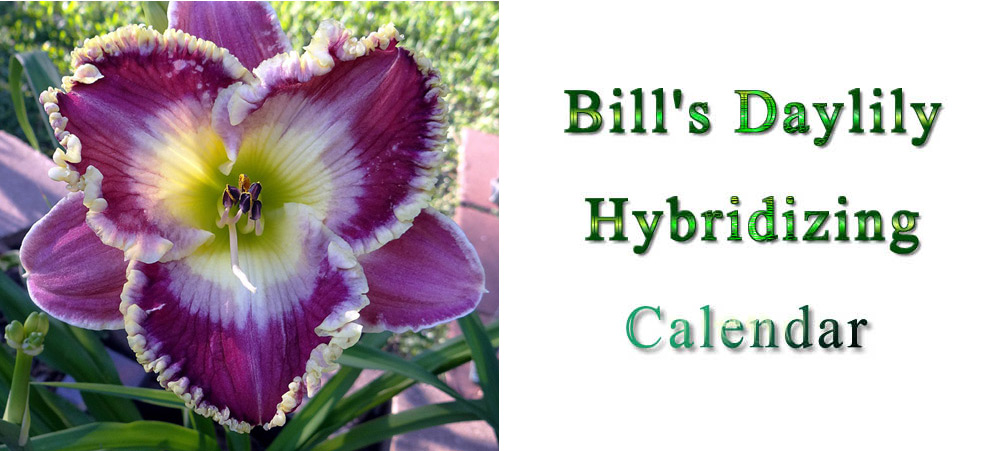At this time of year my days are packed full. Daylilies are blooming everywhere and pollen needs to be spread so there will be seeds for next year's crop. Weekends are the most fun because I can take my time and enjoy the garden. Here's what my typical weekend day is like.
The first thing I do in the morning is to walk the new seedling bed to see if there is anything new and exciting blooming. There's no way to describe the feeling of seeing that first bloom on a seedling that you just know is going to be special.
Then I walk the evaluation beds. On average there are three years worth of seedlings under evaluation at any one time. I look at the ones I selected last year to see if they show the same promise they did when they were marked. I look at the two year olds to see which have become good performers. The three year olds are in the final year of evaluation so I'm looking to make a determination about what I will do with them in the fall. They'll either be registered, sold as garden plants in my yard sale, given away to friends and relatives, or in some cases sent to the compost pile.
Lastly I walk the hybridizing beds to see who is "struttin' their stuff" today.
Then it's time to check to see if the pollen is ready to start hybridizing. The pollen is ready when the anthers have opened and the pollen has dried. If the pollen is ready, I do my hybridizing next. Otherwise I take pictures first.
To pollinate, I take the pollination plan that I created last night and go to work making all the crosses and tagging the blooms with the colored wires. I like to pollinate as early in the day as possible because it gets more difficult to set seed as the average daytime high temperatures get warmer. Once daytime temperatures get into the 90's I usually give up pollinating entirely.
By the time the pollinating has been completed, most blooms are fully open and at their best so I grab my camera and head out for some serious picture taking. I start with the first year seedling bed taking pictures of all the best blooms marking the 'keepers' as I go (see April for details on marking seedlings). Every bloom shot is followed by a picture of the flag showing the number it has been assigned. This way it's easy to identify each picture without having to keep a separate list.
Next I move on to the evaluation beds followed by the hybridizing bed, again taking pictures of just about every bloom that looks good and the marker showing it's number or name. I take lots of pictures. Even if I already have pictures of a cultivar, if today's bloom looks good I'll take another. It can turn out to be a better shot and I like to have good pictures of all my lilies.
After lunch I upload pictures to the computer and change the file names to the daylily names using the pictures of the flags and marker names. While I usually take pictures of each daylily on different days I only keep the best pictures. After uploading the pictures I go through them and delete any that didn't turn out well.
In the late afternoon or early evening I may water if it hasn't rained recently. Daylily blooms are much better when the plants are well watered during bloom season. I also dead-head of all the beds. Dead-head means to remove all of the day's blooms as they will be dead by morning anyway and the dead blooms detract from the beauty of the garden. For the blooms that were pollinated that day, I use florist sheers to snip off the majority of the bloom leaving about 1" around where the pod will be forming. If I don't have time to completely dead-head the garden, I at least remove the blooms that will interfere with tomorrows blooms when they open.
The last thing I do each day is to make the rounds with my clip board and a new check sheet noting all the cultivars and seedlings that will be blooming tomorrow. From this list I prepare my pollination list for tomorrow (see April for details).
So as you can see, it's a full day but it's a happy time for a hybridizer.

